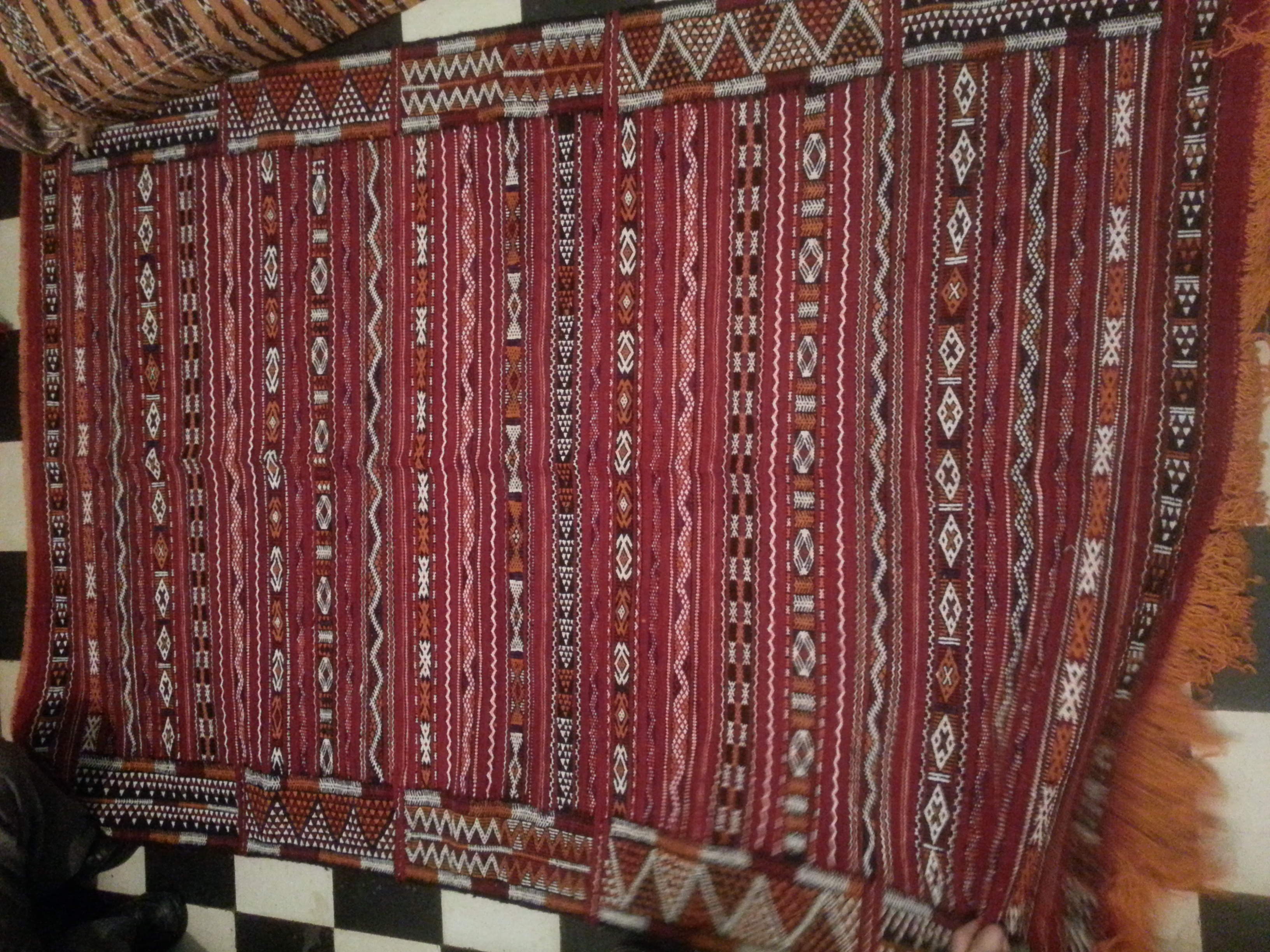When most people think of Morocco, the first thing that comes to mind is Saharan dunes or winding medinas or Rick’s Cafe. But Morocco is a place of thousand landscapes. We travelled up to Azrou in the Middle Atlas Mountains to find our carpet. The Berbers that live in these parts have for time immemorial added carpets to their walls and floors for warmth on the long winter nights.
Each tribe in Morocco has its own style of carpet. The ones we fell in love with were Zemmour carpets. For the full story on finding the carpet, read our story … Hunting for Treasure in Morocco.
Handwoven
Berber carpets are handwoven, each a unique fingerprint of the maker’s creative powers of a particular month.
The weave is one layer, making it prone to warping, in fact the warping keeps them unique. The corners are never square but they often come in similar widths as they made on the same looms but they won’t align together, believe me, we tried. There are no copies or repeats according to the locals it is bad form to do so.
As they are single weave, they are not tufted (ie no fluffy pile). Although they are very warm. The tighter the weave the better implied quality, there shouldn’t be anywhere that you can see through the carpet. The warp of the carpet should be constant over time, carpets with a loose weave are likely to change shape over time and are more prone to damage.
A single weave carpet has (when carrying three up a hill) of being lighter than backed and tufted carpet (like say a Persian carpet for instance).
At one end of the carpet there are tassels, these tassels are another sign of quality. This is where you can test the material quality. Take a lighter and burn the end of the tassel. Wool will not stay alight when you take away the flame, give off the smell of burning hair (that is what you are doing) and become ash. Synthetics will melt, give off the smell of burning plastic, and stay alight. A mix will do something in between.
Colours and Patterns
The patterns are generally geometric, made up of triangles and zig zags that cross in bands across the carpet.
Each carpet has a base colour with the patterns woven in black and white, usually. Given the unique method, these are not hard and fast rules but more like guidelines. The base colours we found were either red, yellow or blue.
When buying these carpets you pay more, the more intricate the pattern (given the same age). On modern Zemmour the patterns are far more intricate than those of 80 years ago. And an old one, you are likely to pay more for two.
Nowadays there has been a move away from natural dyes to synthetic ones but still you will find that yellow and red age well, becoming more rustic, whereas blue tends to a grey colour that (in my humble opinion) is less desirable. In any case, ask the trader to show you the faded colours to future proof your purchase.
It is the belief of the author that the actual quality doesn’t really matter, buy what you like and enjoy it in your home, and if you prefer the brighter synthetic colours and simpler designs then buy them and pay a bit less.










